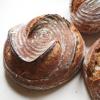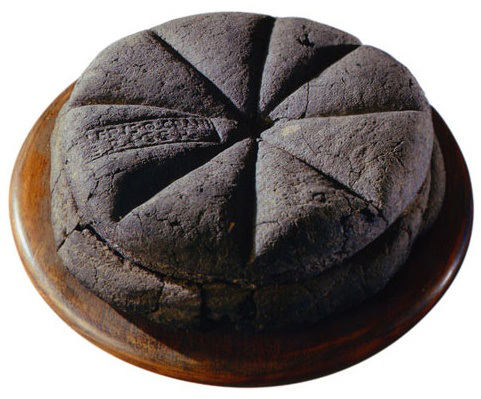September 2, 2013 - 1:08pm

Overdone toast?

A fascinating find. This loaf of bread, discovered at Pompeii, has been preserved for nearly two millenia under the volcanic ash that destroyed the city.
http://ridiculouslyinteresting.com/2013/07/22/preserved-loaf-of-bread-discovered-at-pompeii/
The markings at the left come from a bread stamp, which is described here:
http://www.scribd.com/doc/162226224/Ancient-Bread-From-Pompeii-Fascinates
It reminds me a bit of that loaf I forgot in the oven...;-)
-Brad


Now I believe that a bread stamp would be a wonderful gadget, I want one!
Bread stamp discussion from 2007.
Be sure to read the link in the original post.
cheers,
gary
Hi Gary,
Thanks for the links you posted. Interesting reading.
-Brad
maybe they should set the bread machine to "Light Crust". ;-)
"Caesar we have bad news and good news.
Pompeii is in ruins, but there's plenty of well done toast for everybody!"
http://www.britishmuseum.org/whats_on/past_exhibitions/2013/pompeii_and_herculaneum/pompeii_live/live_event/bread_recipe.aspx
In AD 79, a baker put his loaf of bread into the oven. Nearly 2,000 years later it was found during excavations in Herculaneum. The British Museum asked Giorgio Locatelli to recreate the recipe as part of his culinary investigations for Pompeii Live. Try it for yourself using Giorgio's recipe.
2,000 year old Pompeii Bread
Ingredients
400g biga acida (sourdough)
12g yeast
18g gluten
24g salt
532g water
405g spelt flour
405g wholemeal flour
Method
Melt the yeast into the water and add it into the biga. Mix and sieve the flours together with the gluten and add to the water mix. Mix for two minutes, add the salt and keep mixing for another three minutes. Make a round shape with it and leave to rest for one hour. Put some string around it to keep its shape during cooking. Make some cuts on top before cooking to help the bread rise in the oven and cook for 30–45 minutes at 200 degrees (C)
They were using yeast as a measurable baking ingredient in 79 AD…
and Hodgson Mill gluten, too.
switched the recipe. In the video they use authentic type flour and a wild yeast starter, but in the published recipe they dumbed it down with modern yeast and modern ingredients. Watch the video.
Hi. I founde good video. In AD 79, a baker put his loaf of bread into the oven. Nearly 2,000 years later it was found during excavations in Herculaneum. The British Museum asked Giorgio Locatelli to recreate the recipe.
How to make 2,000-year-old-bread
I have buy Bread Machine. Good article i founde here jonsguide...
This video uses traditional shaping for holy bread. The link and videos are also listed under: Jesus Bread (TFL archives) It is the second of two videos.
https://www.youtube.com/watch?v=yw9Fo-5RLRY
Interesting is that two discs are cut out, the lower one is wetted and the second stamped disc is stacked onto the lower disk and pressed together. Although this stacking is done today, often religious practises are very conservative and change slowly or very little over such a time span. Perhaps with the Pompeii bread, the spoke like dividing lines were made using a wheel like stamp (much faster than one thin stick or blade) pressing once, or twice (turning slightly, maybe less sticking) and was the first stamp to press two bread discs together and thus mark breaking lines for portions. A second stamp for identification could be employed before or after the first stamping.
and I was playing around with the mosaic previously posted...